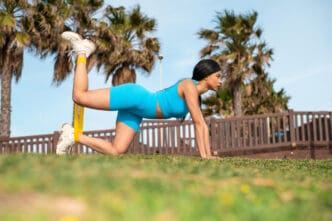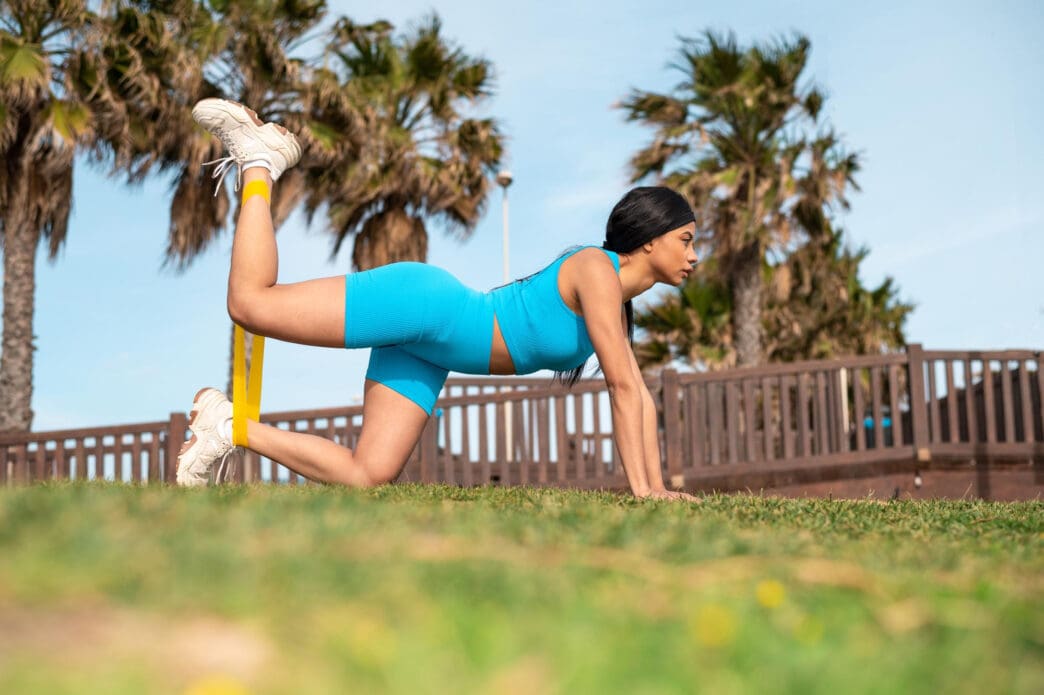A Quick Takeaway
The Story Behind the Trend
How to Make It Work for You
The Community View
For runners aiming to elevate their performance, enhance efficiency, and minimize injury risk, integrating high-knee and butt-kick drills into a regular training regimen is a game-changer. These fundamental plyometric exercises are crucial for developing explosive power, improving stride mechanics, and boosting overall running economy, benefiting anyone from casual joggers to competitive athletes across any environment, including Miami’s vibrant running landscape. They are best performed as part of a dynamic warm-up before a run or as a dedicated drill session to cultivate a more athletic and sustainable running form.
The Science Behind the Stride: Why High-Knees and Butt-Kicks Are Essential
High-knee and butt-kick drills are more than just fancy moves; they are scientifically proven to refine the biomechanics of running. By exaggerating the natural movements of the running stride, these drills help ingrain efficient motor patterns and strengthen the specific muscle groups responsible for propulsion and stability. This targeted training translates directly into a more powerful, fluid, and less injury-prone run.
Enhancing Running Economy and Efficiency
Running economy refers to the amount of oxygen consumed at a given running speed; a better economy means you use less energy to run at the same pace. High-knee drills improve hip flexor strength and range of motion, allowing for a higher knee drive and a more powerful forward propulsion. Butt-kicks, conversely, emphasize a quicker heel recovery and hamstring activation, reducing ground contact time and minimizing wasted energy.
Boosting Speed and Power
These drills are plyometric in nature, meaning they involve rapid and powerful muscle contractions. High-knees develop the fast-twitch muscle fibers in the quadriceps and hip flexors, crucial for generating explosive power for sprints and uphill climbs. Butt-kicks strengthen the hamstrings and glutes, which are vital for pulling the leg through quickly and efficiently, contributing significantly to faster leg turnover and overall speed.
Improving Form and Coordination
Often, runners develop compensatory patterns due to weaknesses or imbalances. High-knees and butt-kicks force the body to move through a full range of motion with proper alignment, improving neuromuscular coordination. This leads to better posture, a more balanced arm swing, and a rhythmic stride, all of which are hallmarks of an efficient runner.
Injury Prevention
A stronger, more coordinated body is a more resilient body. By strengthening key muscle groups like the hip flexors, hamstrings, glutes, and core, these drills help stabilize the pelvis and lower limbs. This enhanced stability and strength reduce the strain on joints and connective tissues, significantly lowering the risk of common running injuries such as hamstring strains, IT band syndrome, and runner’s knee.
Mastering the High-Knee Drill: Technique and Benefits
The high-knee drill focuses on lifting the knees towards the chest with power and control, mimicking the initial phase of an efficient running stride. Executing this drill correctly is paramount to reaping its full benefits.
The “How-To”: Step-by-Step Guide
Begin by standing tall with your core engaged and gaze forward. Drive one knee explosively towards your chest, aiming for hip height or higher, while simultaneously driving the opposite arm forward and up, maintaining a 90-degree bend at the elbow. Land lightly on the ball of your foot, immediately transitioning to the next leg with a fluid, rhythmic motion. Focus on quick ground contact and a powerful, upright posture.
Key Muscles Engaged
This drill primarily targets the hip flexors (iliopsoas), quadriceps, and lower abdominal muscles. The glutes and hamstrings also play a supportive role in stabilizing the pelvis and assisting with the powerful leg drive. A strong core is essential for maintaining an upright torso and preventing energy leakage.
Variations for Progression
Start with marching high-knees to master the form at a slower pace. Progress to running high-knees, where you move forward with continuous, quick repetitions. A-skips incorporate a slight hop with each knee drive, adding a plyometric element and enhancing coordination between arm and leg movements. For an added challenge, try high-knees with a resistance band around your ankles or knees.
Perfecting the Butt-Kick Drill: Technique and Benefits
The butt-kick drill emphasizes a rapid heel recovery towards the glutes, simulating the quick turnover of the leg during the latter part of the running stride. This drill is crucial for activating the hamstrings and improving leg speed.
The “How-To”: Step-by-Step Guide
Stand tall with an engaged core and look straight ahead. From this position, rapidly kick one heel towards your glutes, aiming to gently “kiss” your buttock with your heel. Maintain a quick, light foot strike, landing on the ball of your foot before immediately switching to the other leg. Keep your upper body stable and upright, driving your arms in sync with your legs.
Key Muscles Engaged
Butt-kicks primarily activate the hamstrings and glutes, which are responsible for the powerful hip extension and knee flexion needed for propulsion. The calves also work to facilitate the quick push-off and landing. This drill helps to strengthen the posterior chain, often neglected in favor of the quadriceps.
Variations for Progression
Start with standing butt-kicks, performing the movement in place to focus on form. Once comfortable, move into running butt-kicks, traveling forward with continuous repetitions. B-skips combine a high-knee drive with a subsequent heel recovery, offering a more complex coordination challenge and further integrating the full running stride mechanics.
Weaving Drills into Your Training Plan
Incorporating these drills strategically into your routine is key to maximizing their benefits without overtraining. Consistency is more important than intensity in the initial stages.
When to Perform Them
The ideal time for high-knee and butt-kick drills is during your dynamic warm-up before a run. A set of 2-3 repetitions over 10-20 meters for each drill can effectively prepare your muscles and nervous system for the demands of running. They can also be included in a dedicated drill session once or twice a week, separate from your main runs, to focus purely on form and power development.
How Often and How Much
Begin with 2-3 sets of each drill, covering 10-20 meters per set, 2-3 times per week. As your coordination and strength improve, you can gradually increase the distance or add more complex variations. Listen to your body and ensure adequate rest to prevent fatigue and allow for adaptation.
The Miami Runner’s Edge
For runners navigating Miami’s unique climate and diverse terrains, these drills offer a distinct advantage. Improved running economy helps conserve energy in the heat and humidity, allowing for sustained performance. Enhanced power and coordination are beneficial whether tackling the bridges of Key Biscayne, the flat stretches of the Venetian Causeway, or the winding paths of local parks. A resilient body, built through consistent drill work, is better equipped to handle the demands of year-round training in South Florida.
Avoiding Pitfalls: Common Errors and How to Correct Them
While seemingly simple, these drills can be performed incorrectly, diminishing their effectiveness or even increasing injury risk. Awareness and correction are crucial.
Over-rotation/Twisting
Many runners tend to twist their torso or hips during these drills, especially when trying to generate more power. This can strain the lower back. Keep your core tight and stable, focusing on a straight-ahead movement with your hips and shoulders.
Leaning Too Far Back/Forward
Leaning too far back indicates a lack of core engagement, while leaning too far forward suggests overcompensation. Maintain an upright, slightly forward-leaning posture, as you would in an efficient running stride. Imagine a string pulling you up from the crown of your head.
Lack of Arm Drive
The arms are integral to running efficiency, providing balance and contributing to forward momentum. Ensure your arms are actively pumping in sync with your legs, maintaining a strong 90-degree bend at the elbow and driving from the shoulder, not just the elbow.
Not Engaging the Core
A weak or disengaged core is a common culprit for many form issues. Actively brace your abdominal muscles throughout the drills, as if preparing for a gentle punch to the stomach. This stabilizes your trunk and ensures efficient transfer of power from your lower body.
Unleashing Your Running Potential
High-knee and butt-kick drills are foundational elements for any runner serious about improving their performance, preventing injuries, and truly enjoying the sport. By dedicating a small portion of your training to these powerful exercises, you will develop a more efficient stride, increase your speed and power, and build the resilient body needed to conquer any road or trail, from Miami’s scenic routes to competitive race courses. Embrace these drills as your secret weapon to unlock your inner athlete and transform your running experience.







